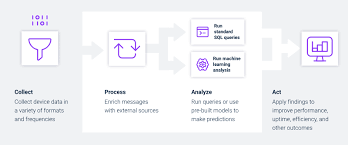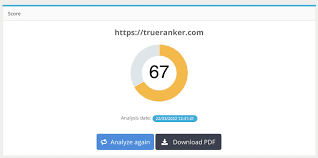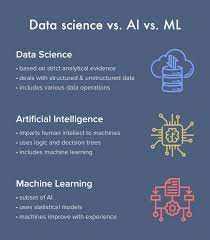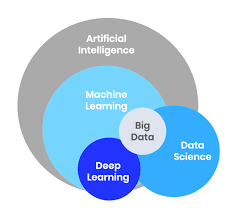The Power of IoT Data Analytics
Internet of Things (IoT) data analytics is revolutionising the way businesses operate and make decisions. By harnessing the vast amounts of data generated by interconnected devices, organisations can gain valuable insights that drive efficiency, innovation, and growth.
What is IoT Data Analytics?
IoT data analytics involves collecting, processing, and analysing data generated by IoT devices. These devices can range from sensors in manufacturing plants to smart thermostats in homes. By extracting meaningful information from this data, businesses can make informed decisions in real-time.
The Benefits of IoT Data Analytics
One of the key benefits of IoT data analytics is predictive maintenance. By monitoring the performance of equipment through IoT sensors and analysing the data in real-time, organisations can predict when maintenance is needed before a breakdown occurs. This proactive approach reduces downtime and maintenance costs.
IoT data analytics also enables businesses to improve operational efficiency. By analysing data on energy consumption, production processes, or supply chain logistics, organisations can identify areas for improvement and optimisation. This leads to cost savings and increased productivity.
Challenges and Considerations
While IoT data analytics offers tremendous potential, there are challenges to overcome. Security and privacy concerns are paramount when dealing with sensitive data from interconnected devices. Organisations must implement robust security measures to protect against cyber threats.
Data quality is another consideration in IoT data analytics. With a large volume of data being generated by diverse devices, ensuring the accuracy and reliability of the data is crucial for making informed decisions. Organisations must establish protocols for cleaning and validating the data before analysis.
The Future of IoT Data Analytics
The future of IoT data analytics holds great promise. As more devices become interconnected and generate vast amounts of data, the potential for extracting valuable insights will continue to grow. Advancements in artificial intelligence and machine learning will further enhance the capabilities of IoT analytics.
Organisations that embrace IoT data analytics will be better positioned to drive innovation, improve operational efficiency, and stay ahead in an increasingly competitive market. By leveraging the power of interconnected devices and advanced analytics tools, businesses can unlock new opportunities for growth and success.
Top 5 Tips for Effective IoT Data Analytics: Ensuring Security, Real-Time Insights, and Strategic Integration
- Ensure data security and privacy measures are in place to protect sensitive IoT data.
- Implement real-time analytics to gain insights and respond quickly to changing conditions.
- Utilise machine learning algorithms to identify patterns and anomalies in IoT data for predictive maintenance.
- Integrate data from various IoT devices and sources to create a comprehensive view of operations.
- Regularly review and update your analytics strategy to keep pace with evolving technologies and business needs.
Ensure data security and privacy measures are in place to protect sensitive IoT data.
Ensuring robust data security and privacy measures are in place is essential to safeguard sensitive IoT data. With the vast amount of information being generated by interconnected devices, protecting this data from cyber threats and unauthorized access is paramount. By implementing strong encryption, access controls, and regular security audits, organisations can mitigate risks and build trust with their customers. Prioritising data security not only protects valuable information but also ensures compliance with regulations and standards, fostering a safe and secure IoT ecosystem.
Implement real-time analytics to gain insights and respond quickly to changing conditions.
Implementing real-time analytics in IoT data analytics is crucial for businesses to gain valuable insights and respond promptly to changing conditions. By analysing data as it is generated by interconnected devices, organisations can make informed decisions in the moment, leading to improved operational efficiency and proactive problem-solving. Real-time analytics allows businesses to detect anomalies, identify trends, and take immediate action, ensuring that they stay agile and competitive in a fast-paced environment.
Utilise machine learning algorithms to identify patterns and anomalies in IoT data for predictive maintenance.
By utilising machine learning algorithms to analyse IoT data, businesses can effectively identify patterns and anomalies that may indicate potential issues. This proactive approach enables predictive maintenance strategies to be implemented, allowing organisations to address maintenance needs before equipment failures occur. By leveraging the power of machine learning in IoT data analytics, businesses can enhance operational efficiency, reduce downtime, and ultimately improve overall productivity and cost-effectiveness.
Integrate data from various IoT devices and sources to create a comprehensive view of operations.
Integrating data from various IoT devices and sources is a crucial tip in IoT data analytics. By combining data streams from different devices, sensors, and systems, businesses can create a comprehensive view of their operations. This holistic approach enables organisations to gain deeper insights into their processes, identify patterns and trends, and make more informed decisions. With a unified view of data across multiple sources, businesses can streamline operations, improve efficiency, and drive innovation in a connected world powered by IoT technologies.
Regularly review and update your analytics strategy to keep pace with evolving technologies and business needs.
To maximise the benefits of IoT data analytics, it is essential to regularly review and update your analytics strategy. As technologies and business needs evolve rapidly, staying current with the latest advancements ensures that your analytics approach remains relevant and effective. By continuously assessing and adapting your strategy, you can harness the full potential of IoT data to drive innovation, improve efficiency, and make informed decisions that propel your business forward in a dynamic digital landscape.






